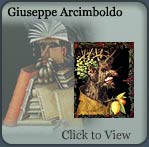Gesture DrawingWetcanvas Basic 101 Drawing Class |
|||||||||||||

OverviewHello, my name is Charles H. Tyler, IV. I'm going to share with you, my reasons and methods for doing gesture drawings or sketches. Gestures are a quick way to capture the main feeling or intent of what you are attempting to draw. Some people have a hard time understanding what I mean by the main feeling or intent, because feelings and intents aren't concrete things. You can't actually draw them. For those people, a better, but less accurate definition would be to quickly capture the main lines in a piece. These lines are sometimes referred to as the lines of action. For example, a gesture sketch of someone throwing a baseball might have a line from the throwing arm down to the foot, showing the angle of the body, and another line for the planted foot to ground the figure; maybe a quick curve for the head. That's all you really need, actually. Most people can guess what was intended just from those few drawing strokes. For a floor lamp, a quick vertical line and the shape of the shade to indicate what the object is, would do the trick (Some people might consider this a quick sketch and not a gesture, since it's an inanimate object. I'm using the terms interchangeably here.) In actual practice most people go beyond the simple stick figure with their gestures. Some artists just copy another artist they admire, and don't really know why they're taking a drawing to a particular level of completion. That's good and bad. Good because they're getting drawing practice. Mostly bad though because it's harder to obtain your goals if you don't know exactly what your goals are. Plus they run the risk of needless rendering. Ideally every line and mark in a gesture drawing should serve a purpose. Anything after the important information is captured, is really not gesture anymore, it's rendering. Better reasons for moving past the basic stick figure are to show volume, shape, and form. I'll demonstrate all of these later. Since many artists use their gestures as a basis for more finished works, they'll add more visual information to aid them later in the creative process. So, why should someone do gesture sketches anyway? I can't answer that for everyone. Different people get different things out of doing them. Personally, I started doing them to improve my speed, accuracy, and confidence in my lines. By speed, I don't mean I actually want to draw faster (Although that comes as an added benefit.) It's more that I want to bring my drawings to a more complete level faster, no matter where I am in the drawing process. That way I can stop at any time, and feel like I've resolved the piece. I can also go back and work it to a more finished level. Plus I'm a firm believer in the principle that the more artwork I pump out, the faster I'll improve. Working on a portrait for a week may improve my rendering skills; but it won't keep me from drawing a lopsided head the next time I do a portrait. If I draw fifty heads, eventually I'll start to draw those suckers straight. Gestures themselves aren't meant to be accurate. So, the accuracy thing may puzzle some people. However, by their nature, gestures make you place lines so that they make sense, and are generally where they should be. Confident lines are lines that are smooth and precise. Confidence in your lines, comes from having to work quickly and accurately. It's just a side effect. If you're trying to build confidence in your lines, I would suggest working in ballpoint pen. Since it offers little opportunity to erase or vary line width, you're forced to stick with what you've got. I've heard it said many times, "It's better to have a confident line that's a little off, than a wobbly poorly drawn one that's in the right place." The later will draw attention to its self, and look wrong. Before getting into the actual gestural drawing, I'll go over some basics. Think before you draw. Gather as much information as you can about your subject before you start. Decide what's most important about it, and put it on your drawing surface. Once you start to draw, stay loose and keep the pen/pencil/brush/whatever moving. Don't be afraid to draw through your figure. Put your lines down quickly. Never go over a line with the intent of fixing it. If it's way off, leave it alone and put another line in the proper place. If it's just a little off, leave it alone. Chances are, you're the only one that will notice. Going over a line to add contrast, define form, or just because it got in the way, is ok; basically any reason besides you wanted to correct it a little. Remember, gestures aren't meant to be precise. The reference I'll be using in this demonstration is a photograph by Steve McCurry. I got it from www.nationalgeographic.com, and it was originally published in "India: Fifty Years of Independence," May 1997, National Geographic magazine. 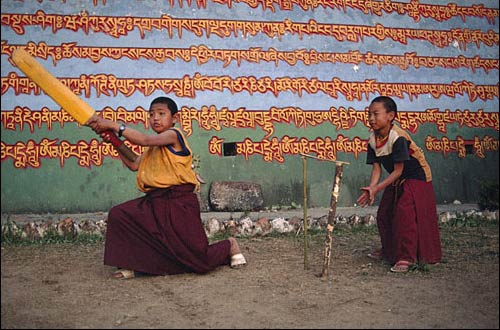 Lets start with a simple gesture. I just want to indicate the different forms and their actions. It should only take a few seconds to analyze the reference, and a few seconds to put down the lines you need. Only a few strokes are needed to capture the subjects. The progression isn't really a step by step. It's just an approximation of how I built up the figures and elements. Most of it could have been done more smoothly and expressively with a single unbroken line; oh well. 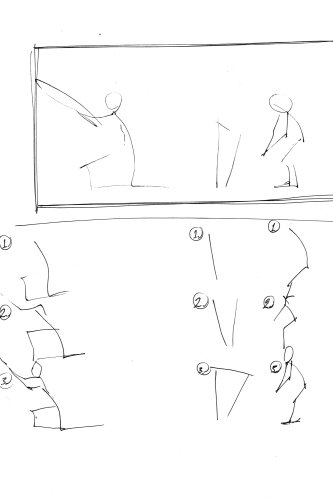
This time I'm going to try to capture a little of the volumes present. Not only do I want to express what these things are doing, but also how much space they take up while doing it. Notice how I seem to pick the longest straightest line to start with. That's a good habit to get into, but not required. This one still only took a few seconds. 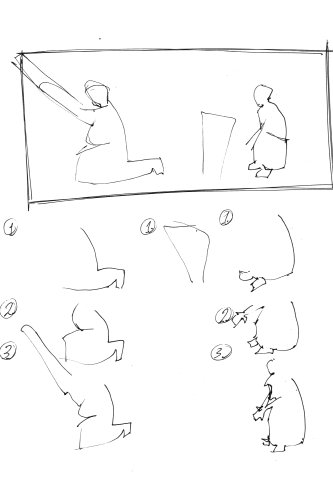
Now I want to capture some of the shapes that are in the reference. This one took a little longer, but still no more than a minute or two. I didn't do a very good job on it. The proportions and placement of elements are off. There's still enough information to develop it into a more finished drawing or painting. If it really bothered me, I would just scrap it, and start a new one. Trying to fix it would create more of a mess than anything else. The clarity and purpose of the lines would be lost. I'd end up building my finished piece on a weak base. 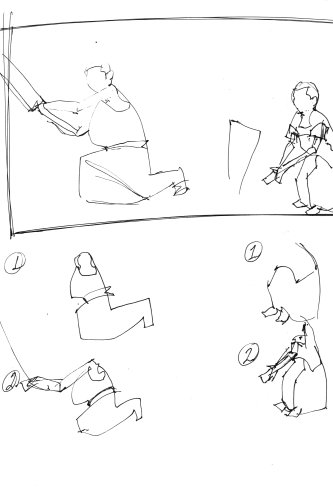
The last thing I'll touch on will be displaying information about planes and values. This really gets into rendering, but so what. Sorry, you only get one little boy this time; I ran out of room. You'll notice I put a value chart at the bottom. Value charts are a good tool for trying to match the value shown in the reference. My quick advice on hatching is to keep your strokes going along with the shape or form you are working within. That means that if you are in a rectangular shape, your hatching lines will be parallel to one of the sides. Look for changes from light to shadow, to know where the different planes are. This one probably took about five minutes. Most of that time was spent deciding on values, after the initial gesture was completed. 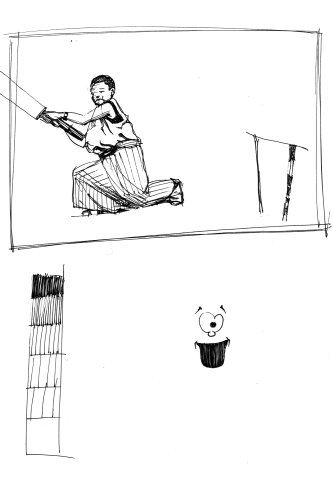
That's pretty much all I have on gesture drawing. I hope it was helpful to someone. Charles H. Tyler, IV Article, Copyright Charles H. Tyler, IV, 2005
|
|||||||||||||








